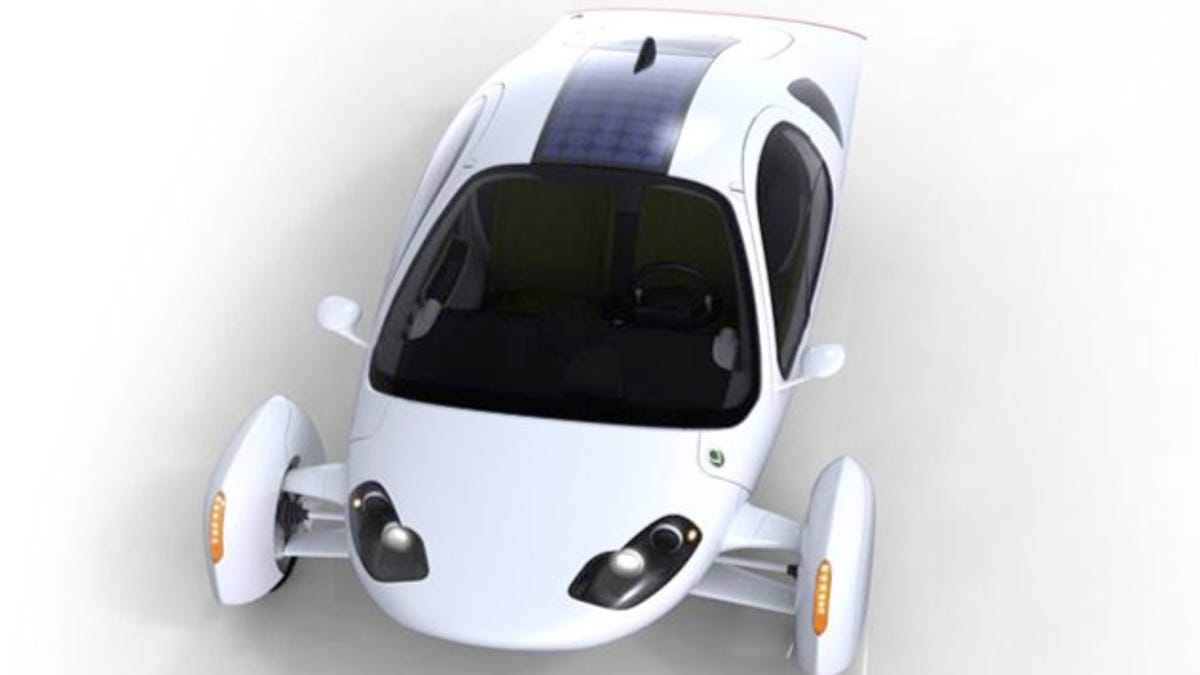Dent an Aptera 2e, win $100
In Aptera's manufacturing facility, visitors are given a sledgehammer and encouraged to swing away at the company's electric vehicle prototype. Dent it, and you can win $100.

In Aptera Motor's manufacturing facility, visitors are given a sledgehammer and encouraged to swing away at the company's electric vehicle prototype. Dent it, and you can win $100.
This challenge, of course, will not apply to accidents on the streets when the three-wheeled aerodynamic vehicle hits California's congested highways in October.
The hands-on exercise demonstrates the vehicle's inherent safety, and is an attempt to overcome the perception that a small, lightweight, three-wheeled vehicle isn't as safe as a conventional gas-fueled car.
The secret behind the Aptera 2e's strength is its shell, which is comprised of material that is lighter than steel but three times as strong, according to the company's Web site.
"The composite is like a silica-based fabric that has been soaked with resin," says Marques McCammon, chief marketing officer for Aptera. The more thoroughly you can infuse the fabric with resin, the more you increase the material's safety performance.
The composite can take a higher amount of energy impact, resulting in less damage, says McCammon. When you hit a steel panel with a hammer, it is permanently deformed. But when you hit a composite panel like the one Aptera uses to build its vehicles, the moment you remove pressure from it, the panel goes back to its original shape, he explains.
This goes beyond the demonstration Saturn often performed of their exterior panels which were designed to resist the types of dings and dents a car might get in a parking lot. The Aptera 2e's structure significantly disperses energy throughout the exterior shell. Because the body absorbs most of an impact's energy, occupants inside the vehicle are protected.
Aptera is able to apply this expensive technology more often found in small aircraft and high-end yachts to their vehicle because of the company's proprietary Panelized Automated Composite Construction (PAC2), which lowers the cost of production.
And the Aptera 2e's safety features don't end with its exterior. Though classed as a motorcycle, the vehicle is being developed to car safety specs, and will contain standard safety equipment such as front and side airbags, crumple zones, roll bars, and seat belts.
Although the Aptera is dent-resistant, it's not scratch-resistant. All tests have been conducted on the Aptera 2e's prototype shell. If they were to try it on the finished product, they would still fail the test, but they'd probably ruin the paint job. To date, no one has won the $100 bet, and participants are encouraged to try the same test on their own car. Not surprising, there have been no takers.
Aptera Motors does not currently offer tours and is not open to the public. Potential customers who would like to view the vehicle can make an appointment for a showing later this summer. The Vista, Calif.-based company will eventually like to open their facility to visitors.
The following video by Aptera shows how an Aptera 2e is constructed, including an explanation of the composite material:

